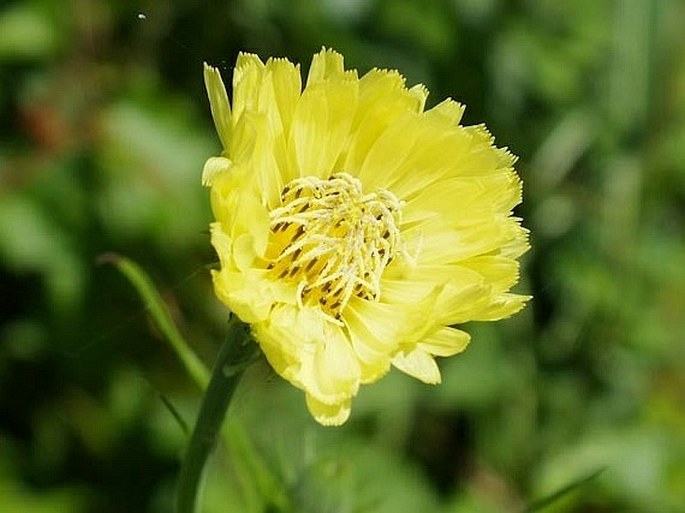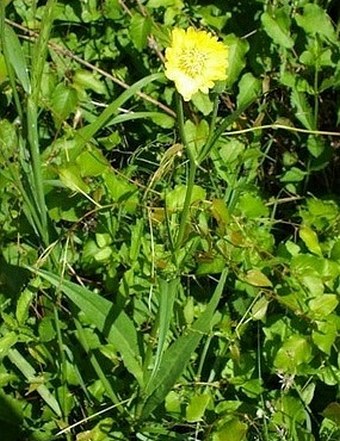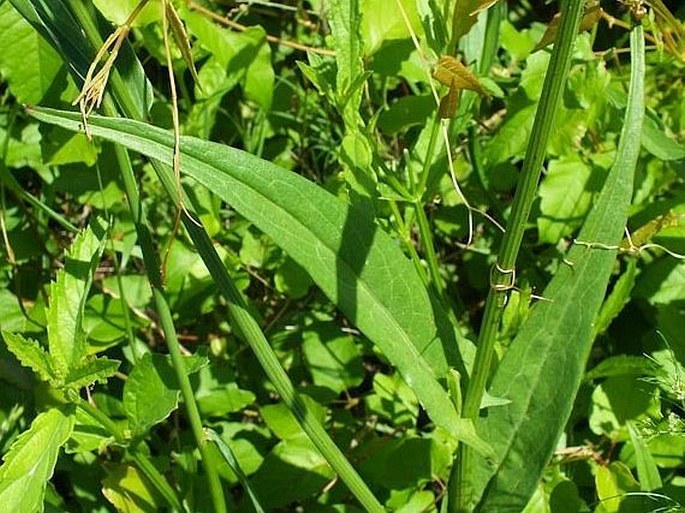Syn.: Barkhausia caroliniana (Walter) Nutt., Chondrilla laevigata Pursh, Leontodon carolinianus Walter, Pyrrhopappus georgianus Shinners, Sitilias caroliniana (Walter) Raf.
Family: Asteraceae Bercht. et J. Presl


Distribution: Species of south east of US, from Nebraska to Pennsylvania and south to Texas.
Ecology: Found at edges of woods, grasslands, disturbed sites, in sandy soils, from sea level to 600 m. Blooms from April to November.
Description: Annual or perennial herb, 20–50 cm or more tall. Stems usually branching from base, glabrous, sometimes finely hairy. Basal leaves elliptic in outline, obtuse-acuminate, pinnately dissected, to 20 cm long and 3 cm wide, the median and upper leaves often auricled, the upper ones undivided or with not more than 1 pair of basal lobes. Flower heads 1–5 in loose corymbs, 2–3 cm across; involucres cylindric to campanulate, 17–24 mm, bracts in 2–3 rows; ray florets light yellow, 50–100, tips truncate, dentate; disc florets many, anthers 2.5–3.5 mm, pollen yellow. Fruit is an achene, reddish brown, 4–6 mm, beak 8–10 mm, with pappus.
Note: The genus Pyrrhopappus is native in North America.

These images were taken in USA, Louisiana, Pearl River Swamp (May 2014).


